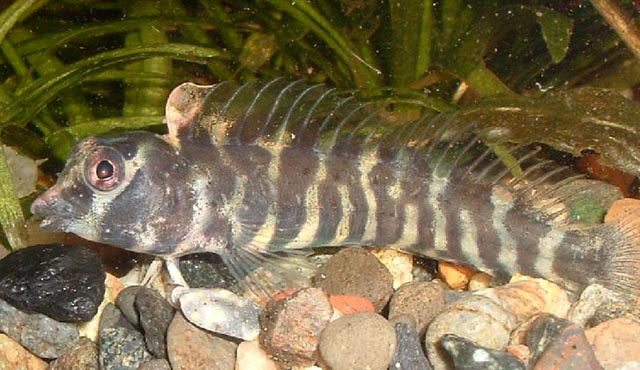| Blenniidae (Combtooth blennies), subfamily: Blenniinae |
| 5.3 cm SL (male/unsexed) |
|
demersal; freshwater; brackish |
| Sumatra, Borneo and Cambodia. |
|
Single, long and thin postcleithrum, well separate from the cleithrum (indicates loss of upper postcleithrum); basisphenoid reduced and loosely attached to the neurocranium; reduced pterosphenoid excluded from external surface of neurocranium; swimbladder in adults; lower jaw margin with well-developed labial flaps; left and right dentaries sutured together; males with distal tips of dorsal and anal-fin rays expanded and with flaplike structures, with fleshy flap near base of anterior margin of first dorsal-fin spine; in comparison to females, males lack conspicuous banding pattern; unbranched central caudal-fin rays; number of epurals reduced from 2 to 1 (Ref. 94102) |
| Adults exhibit conspicuous sexual dimorphism (Ref. 94102). Oviparous. Eggs are demersal and adhesive (Ref. 205), and are attached to the substrate via a filamentous, adhesive pad or pedestal (Ref. 94114). Larvae are planktonic, often found in shallow, coastal waters (Ref. 94114). |
|
Data deficient (DD); Date assessed: 03 June 2019 Ref. (130435)
|
| harmless |
|
Source and more info: www.fishbase.org. For personal, classroom, and other internal use only. Not for publication.

